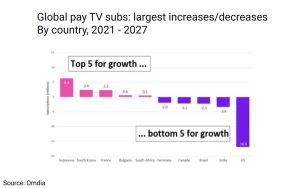Since the web’s inception, we have had a crazed obsession with “hits.” In the ‘90s the question was, “how many hits did your website get?” As the web has evolved and analytics has improved, we’ve gone from asking about hits to asking about page views. There’s nothing inherently wrong with page views, in fact, in the right instance knowing the amount of page views generated by a website or page is quite helpful — but not when it comes to understanding your audience or buying/selling advertising.
That’s why I, like many others, am looking to move away from the page view, at least, as far as using it to determine audience interests and buying/selling advertising. But if not the page view, then what? There isn’t one universal metric that will solve the problem. Honestly, the page view should have never been appointed the “universal metric” for success on the web, but it was, and now we must deal with that. Instead of relying on just one single metric, I propose we start with four metrics: engagement, average time, average page scroll, and CTR (click through rate).
Engagement
Every article on a website should be assigned an engagement score that is calculated in a transparent manner. Content owners need to understand how it was calculated just as much as advertisers do. Ideally, engagement will be calculated using three core metrics (to start). Those being average time, average page scroll, and CTR.
Why those particular three metrics? Because they are the initial best indicators of a visitors engagement on your site. How long they spend on the page, how far down the page they scroll, and whether or not they click through to another page on your site from that article are all key factors in determining people’s engagement level on a piece of content.
Average Time
The average time metric is a crucial part of determining a person’s engagement/interest in an article. Of course, the measurement needs to be smart, it shouldn’t track idle time — how many times have you opened an article in a tab and then clicked away and forgotten about it until later? It should also take into account several other factors when presenting the customer with data, for example, how long was someone on a particular part of the page.
Average Page Scroll
When it comes to page scroll tracking, it’s also of critical importance when calculating engagement. Speed of scroll as well as the time spent on page combined are much more valuable to a customer than assuming because someone scrolled 75 percent of the page they were engaged. How fast did they scroll through 75 percent of the page? Could they have read and/or viewed the content in that time?
CTR (Click Through Rate)
Perhaps one of the most overlooked aspects of engagement tracking currently is where people are going to next on your site (if at all). But I’m sure you can see the value in tracking the number of people who click to another page on your site from a piece of content. These people are truly engaged, you got them to click to another page. Now the question becomes was it because they didn’t like what they were viewing or because something else intrigued them? To find out, it comes back to analyzing time on page and page scroll data.
Adapting to the Four Metrics
Making the move from page views to these four metrics of engagement will not occur overnight, but it needs to happen. Part of the resistance may have to do with the old guard and “this is how we do things,” but another contributing factor may be that digital publishers are a little afraid. They may find they have great page view numbers and not-as-good engagement numbers. If that’s the case I encourage you to leverage your analytics to figure out how you can go about improving engagement on your site. Sooner or later advertisers will wise up (some already have) about how they allocate their spend and it will be highly engaging sites that come out on top.
Digital & Social Articles on Business 2 Community(26)






